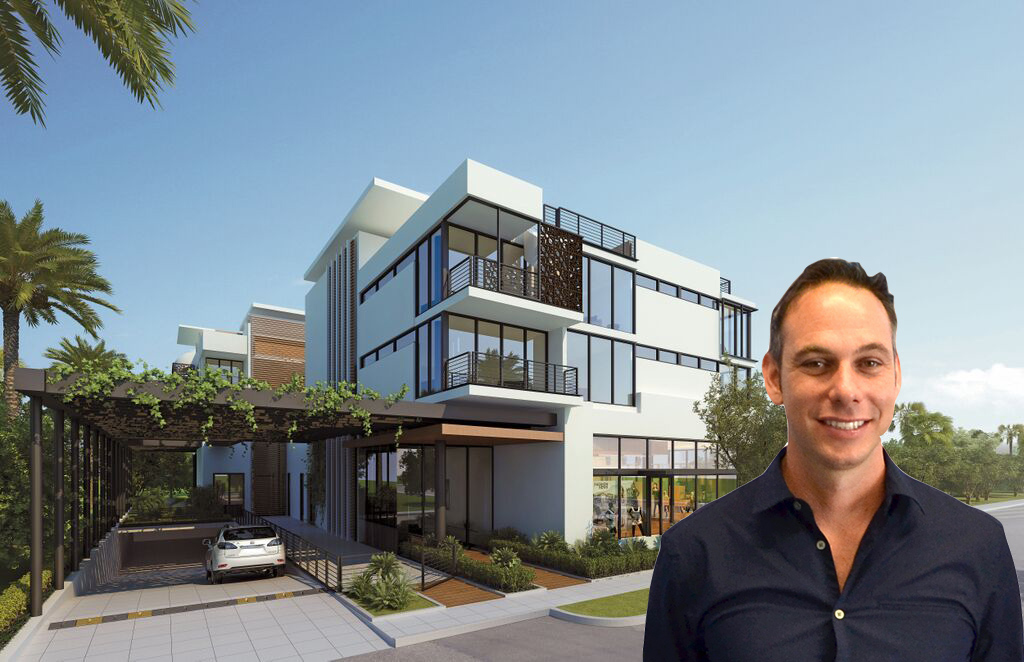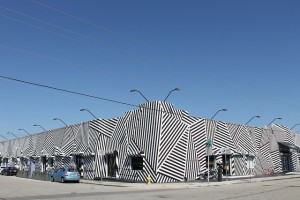Trending
Q&A with Tony Cho: on revitalizing Miami’s urban core, expanding to Broward

Tony Cho, founder and CEO of Metro 1, ended July with a company record: $80 million in transactions. It was a milestone for Cho, who started his real estate career in 2000 with plans to be a “Realtor to the stars.”
Soon after, he would start investing in Miami neighborhoods in the urban core through large-scale assemblages, adaptive reuse, mixed-use developments, and hospitality, retail, land and industrial brokerage and management. Cho, who is known for his involvement in Wynwood, Buena Vista and neighboring areas, has been a big advocate for a massive rezoning of Wynwood, which received preliminary approval from the city of Miami commission in July. Those changes will replace most industrial uses with denser mixed-use, residential developments, while maintaining the neighborhood’s artsy allure.
Cho sat down with The Real Deal to discuss his first sale, Wynwood, and why he’s taking Metro 1 to Broward.
How did you get into real estate?
I was going to school at Northwestern. I did an exchange program in Argentina and ended up staying after the program and working in hospitality in Buenos Aires. When I came back to Miami, I started doing the same thing – PR, marketing and nightlife in the 90s in South Beach. I was in my late teens.
In 2000, I got my real estate license, because I figured this was something else to do. It was a great opportunity. My vision was to be a Realtor to the stars – Million Dollar Listing-type. The first apartment I sold was an apartment on Fisher Island for $1.6 million. But I quickly decided that that wasn’t the type of real estate I wanted to be doing. I looked toward [Wynwood], which in that time, 2000, 2001, Midtown was just being sold. I was really intrigued by the urban core, urban revitalization, what was happening in the Design District, in Buena Vista. I bought an apartment on Biscayne and 21st Street for $60,000 with $9,000 I had saved, and a private loan from a Hialeah loan shark for the rest of it. A year later, I sold it for $180,000. So I made a nice profit.
And then I started investing in Wynwood, Buena Vista, Lemon City, Little River.
What are you working on right now?
We are developing the Wynwood Greenhouse, which is an open-air greenhouse, park, butterfly and bird sanctuary. We expect to start construction later this year and complete next year. I have several projects in Wynwood that I’m redeveloping.
- 560 Northwest 29th Street, an adaptive reuse building next to the Miami Ad School.
- 2900 Northwest First Avenue, 28,500-square-foot two-story warehouse right next to the Rubell Collection for an income-producing property.
We recently acquired a building in Fort Lauderdale to open our second office, so we’re expanding into Broward. We have several development sites and assemblages that we’re partners in. In Miami, we’re primarily focused on downtown into the Upper East Side. We have a lot of holdings in the Lemon City and the Little River area.
On the brokerage side, we’re doing our first exclusive sales for a residential, mixed-use project: Buena Vista Villas, which is now 50 percent reserved. It’s different than what most people are used to. It’s not on the water, it’s not on the ocean. People want to be in those areas now, which I’ve been saying for the last few year, but now people actually do.
Where do you live?
I live in Miami Beach. I used to live in Buena Vista, but I love the ocean. Almost everything we do is really on this side. I consider this all the center part of Miami.
Why expand into Broward?
I think it’s just the right time for us to expand. It’s a logical next market. There’s opportunity there, there’s growth and there’s synergies between Miami and Fort Lauderdale in terms of client representation, investment opportunities. We’ve been in the market actively for the past two years. It makes sense.
We just closed on our office there, but we are looking for more opportunities.
Will it be similar to what you’re doing in Miami?
Hopefully everything I do will be different. And unique. What we’re doing in Lemon City and what we’ve done in Wynwood is very different – concept, ethos, but very much focused on urbanization, revitalization, business development. That’s really the Metro 1 culture. The Panther Coffees, the Zak the Bakers.
Do any of them want to expand to Broward?
We’ve talked to several of them and I think some of them are heading to Broward. When I left South Beach and moved to this area, a lot of these buildings were $10 a square foot. And now they’re $30-plus a square foot. When [rents] got to that point, they hopped around to Lemon City. Then where do you go? Allapattah, Fort Lauderdale. It’s about the creatives, the artists, that are the spark of revitalizing these neighborhoods.
I like any neighborhood that has its own flavor and feel. All of these places have a character. You know you’re in that neighborhood.

A mural in Wynwood. (Credit: Phillip Pessar)
What is your involvement in the Wynwood BID?
I was one of the founding board members two years ago, and I’m on the zoning committee that helped spearhead the rezoning efforts.
Miami is a more mature market, and the areas and submarkets that I’m involved in are much more well known and mature than when I first came here 15 years ago. Everything that has happened in the Design District and Wynwood has been massive.
But it’s still just the beginning, and yet people compare it to Williamsburg, neighborhoods in Stockholm. To be part of that is an honor and really cool to be part of that story. Now that the zoning is going through, you’re going to start seeing really progressive, interesting development. We’re able to achieve a really progressive zoning overlay and revitalization that you won’t see in other parts of Miami. For example, you can build buildings in Wynwood without parking – if you’re building units less than 650 square feet you don’t need parking.
Do you think that’s a good thing?
I think that’s a great thing. Smaller units means more affordable units. Less parking means less incentive to own cars. Less cars on the street means more bikes and more pedestrian traffic and creates more of an urban environment. If we have two million people today, and you know what the traffic is in Miami, imagine when we have five million or 10 million. It’s just not going to be able to take it. Without a public transportation [system] that functions, we won’t be able to grow much more than we have already.




